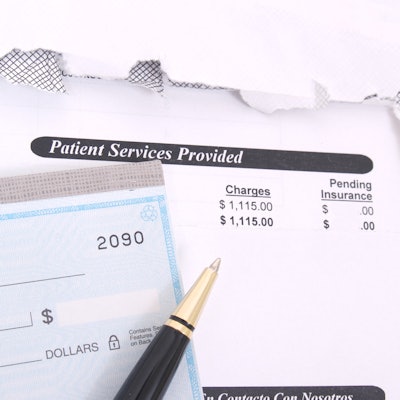
During a podcast, a colleague remarked that his front office repeatedly had him sign refund checks to patients. The front office explained that the patients had overpaid the copayments/coinsurance or the insurance paid more than expected.
If you find yourself routinely sending refund checks to patients with credit balances, running a credit report from your software will not always reveal the problem. Sometimes patients or guarantors are getting refund checks and they haven't paid anything toward their care. A red flag should be raised to stop and look carefully at the account.
 Dr. James V. Anderson.
Dr. James V. Anderson.You and your front office team will have to run the credit report and analyze patients' accounts where there is a credit balance. Pay particular attention to those accounts that have multiple plans involved with the payment of the services.
Participating providers often write off too much money when patients have multiple benefit plans. You will have to pull the explanation of benefits (EOB) for these accounts and recalculate the write-off correctly.
To put it simply, be sure to take the following steps:
- Don't do a write-off or adjustment until all insurance plan benefits have been received.
- Don't forget to submit the secondary insurance and receive the final EOB before doing any calculations.
- Make sure the assignment of benefits is to the practice, not the patient.
- Do your math and check the figures; don't trust the insurance payers to figure the write-off correctly.
- Patients are responsible for the lowest contracted fee for covered services -- that is, any noncovered services minus what all plans have paid.
- Participating dentists (preferred provider organization [PPO] providers) should receive up to their full practice fee from multiple plans if that is how the secondary plan calculates its reimbursement (despite patients only being responsible for the lowest contracted fee). Often a staff member will post a write-off based on the amount on the contracted primary EOB and when the secondary plan coordinates benefits based on the dentist's full fee. This creates a credit balance, and the staff member may send the "refund" to the patient when the money belongs to the practice.
Patients are responsible for the full practice fee unless the practice is contracted and obligated to honor a reduced fee as part of the agreement to participate in the plan. Write-offs depend on whether the practice is in or out of network with the payers.
Start by determining the lowest contracted fee established by all contracted plans. Next, add up the payments received from all payers. If the total of all payments is equal to or more than the lowest contracted fee, the patient owes nothing. The difference between the full fee charged for the service and the total amount received is written off.
However, if the total of all payments received is less than the lowest contract fee, the patient owes the difference. Any balance still owed above the lowest contract fee should then be written off.
This only applies if you are contracted. If you are fee-for-service and not contracted with any plan, you are not obligated to write off any part of your fee.
Confusing, I know. It is easy to make mistakes when the business team doesn't understand how to calculate write-offs, and it can cost the practice more money than I would like to comment on. Another recommendation would be to approve any write-off before signing any refund check. If in doubt, outsource your insurance billing and payment posting to a professional billing company to eliminate expensive errors.
Dr. James V. Anderson is a practicing dentist in Syracuse, UT, and is the CEO and founder of eAssist Dental Solutions. He can be reached via email.
The comments and observations expressed herein do not necessarily reflect the opinions of DrBicuspid.com, nor should they be construed as an endorsement or admonishment of any particular idea, vendor, or organization.


.RbyOLNR6ps.png?crop=focalpoint&fit=crop&fp-x=0.5&fp-y=0.5&h=100&w=100&auto=format%2Ccompress&q=70)




.RbyOLNR6ps.png?crop=focalpoint&fit=crop&fp-x=0.5&fp-y=0.5&h=167&w=250&auto=format%2Ccompress&q=70)











